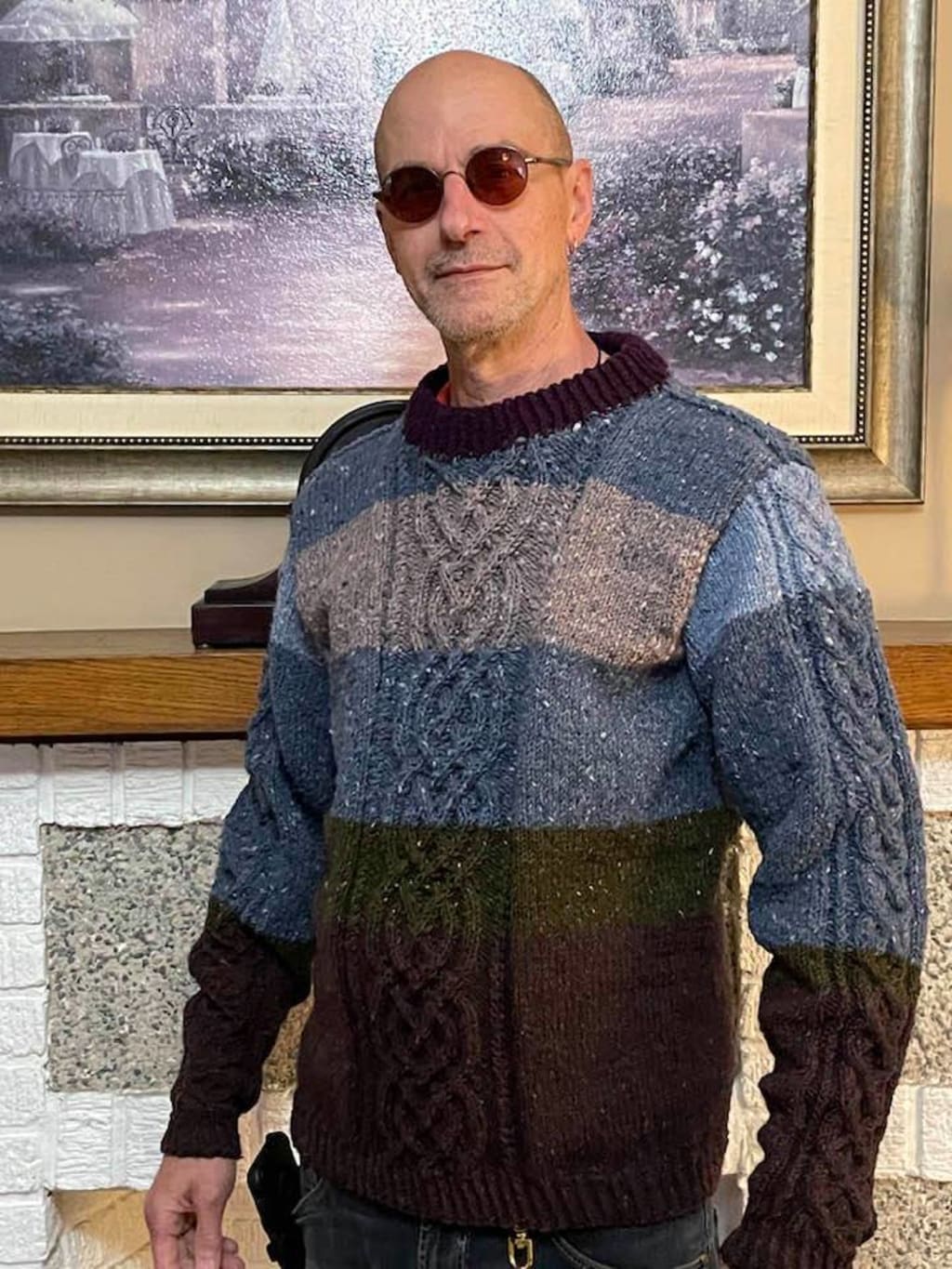Knitting Is my Solace
A Story of My Life-Long Hobby

I was a hyperactive child before the word "hyperactive" became a part of the everyday vocabulary. I also had a hyperactive best friend who I knew since we both were three. Together, we were a force of mischief and source of trouble for our parents. I can’t recall how many times our parents were summoned to the kindergarten and school because we always got ourselves into trouble climbing fences and trees, running away and playing outside into deep night when our parents gathered search parties for us. We both were doing very well at school, acing all subjects. "Such smart girls," our teachers would say to our parents, "studies come too easy for them and that’s probably why they get into so much trouble. Too much time on their hands. If only they could put their energy into something useful.”
Our mothers signed us up for various sports clubs: volleyball, basketball, track and field. In the third grade, we were sent to a specialized volleyball school where we would practice four times a day. I remember we also went to an embroidery class at the same time. Nothing really stuck and we still had a lot of time for mischief. That’s a weird thing about time: the more structured it is, the more you can accomplish.
When we were about nine, my friend’s mom introduced us to knitting. Everything changed after that. We could sit at her home for hours, stationed on the sofa on each side of my friend’s mom, while she was showing us various knitting techniques and patterns. Pretty soon, not only we could do it on our own, we also started to compete with each other: who will finish a scarf first or who will be faster in learning and using a new stitch.
Since then, knitting has become my life-long hobby. When I was about 15, someone gifted me a beautiful book of Aran knitting with instructions and sample patterns. I immediately fell in love with beautiful Celtic ornaments, cables, and intricate patterns. I started to dream about going to the birthplace of knitting one day, which was almost impossible to do from the Soviet Union where I was born.
When the Soviet Union fell apart, I unexpectedly had lots of opportunities to travel for work and studies. However, I finished two Master’s and one PhD program before I was able to make my dream of going to the Aran Islands come true. I traveled to Ireland for an academic conference in June 2013 and took a week’s vacation with my son to go to Western Ireland. When we boarded the ferry from Galway to Inishmore Island, my heart was racing as if I were going to meet a long-lost first love. That expectation was met and more: The islands blessed us with beautiful warm and sunny weather, we were able to take pictures on the edge of the famous cliffs, and I had an opportunity to observe Aran women in local stores knit sweaters from the wool of the sheep raised on the islands. I realized that even though I was a fast knitter (I can finish a man’s medium sweater in a couple of weeks), in no way I could compete with those island women who made their knitting needles fly. However, I was satisfied that I had the same technique and could tell how the knitted piece was made just by looking on the inside and figuring out the stitching.
The technique I use for knitting is commonly referred to here in America as “Continental.” It is different from the American knitting in that it does not require wrapping the thread around the right needle. The first time I encountered the American technique was when I saw my academic mentor and friend knitting a scarf in 2008. I was so amazed I couldn’t resist asking her why she was wrapping the thread around the needle, wasting so much effort and time, when it can be done much faster and simpler, by putting the needle through the stich and pulling the thread from the back to the front (that’s the essence of the continental technique). My mentor-friend replied, “But that’s how I was taught, and my mother and grandmother were knitting the same way.” I think I offended her a little by suggesting that the technique was wasteful, even though she was impressed with how much faster I knit using my technique. I’m truly sorry if I indeed offended her. I didn’t mean it at all and wanted to share my technique with good intentions only.
Some years later, I went to the Jamestown Museum in Virginia and set foot aboard one of the original settlers’ ships. Inside, it featured a designated space for women making the journey across the ocean, and the museum guide mentioned that some of them could have knitted to kill time on the long trip. I don’t know why, but my vivid imagination painted a picture for me where an older woman, a continental technique master, died during the journey and the younger women who had not bothered to learn how to knit before tried to finish something she had started by reconstructing her technique from memory and ended up with wrapping the thread around the needle. That’s probably how the American technique was born, but we will never know for sure. It is clear, however, that it was probably developed in isolation from the continental masters, as a result of unraveling and reconstructing some of the earlier knitted things that were brought from Europe.
But I have digressed from explaining how important knitting is for me. It really is a significant part of my life. I usually have very little time to knit during the academic year, when I teach. But even then, I have several projects going at the same time, and I try to give them at least 30 min a day. You will always find something half-done with needles sticking out of yarn skeins in several places of my house. It’s a good way to keep my knitting skills sharp, to relax, and focus on something that does not require a lot of thinking, and gives pleasure of seeing something tangible coming out from under my hands.
When the pandemic hit and everyone was in lockdown, I had a lot more time to knit. In fact, knitting helped me to have a mental break from my back-to-back Zoom classes, which were incredibly taxing and exhausting. At the beginning, no one knew what the Zoom fatigue was but we all felt it and lived through it. Knitting was my way of mitigating it and having something to focus on, something to apply my creativity to, and to make time in lockdown bearable. My mentor-friend sent me two big boxes of beautiful yarns, so I had a lot of material to work with. During the summer of 2020 alone, I finished a full-size blanket, a couple of pillow covers, a sweater for my teenage son, a shawl for my mentor-friend and several hats and scarfs.
In my entire life, I can’t even estimate how many sweaters, hats, socks and gloves I have knitted and given out as presents to my family and friends. Probably in the high hundreds. At this point, I can knit anything, of any complexity, as long as I have a pattern and good, clear instructions. I can also create my own patterns and happily share them with anyone who is interested. Just for the heck of it, I can even give Zoom lessons in knitting if anyone wants to take them
About the Creator
Lana V Lynx
Avid reader and occasional writer of satire and short fiction. For my own sanity and security, I write under a pen name. My books: Moscow Calling - 2017 and President & Psychiatrist






Comments
There are no comments for this story
Be the first to respond and start the conversation.